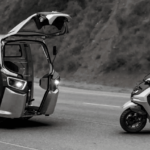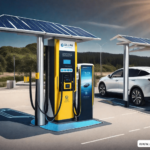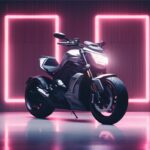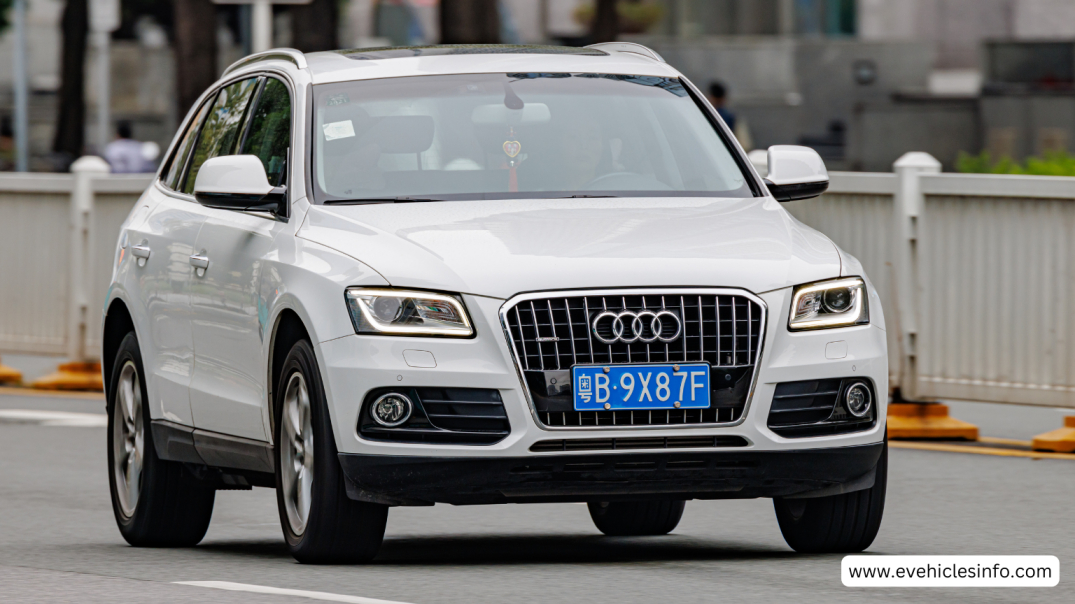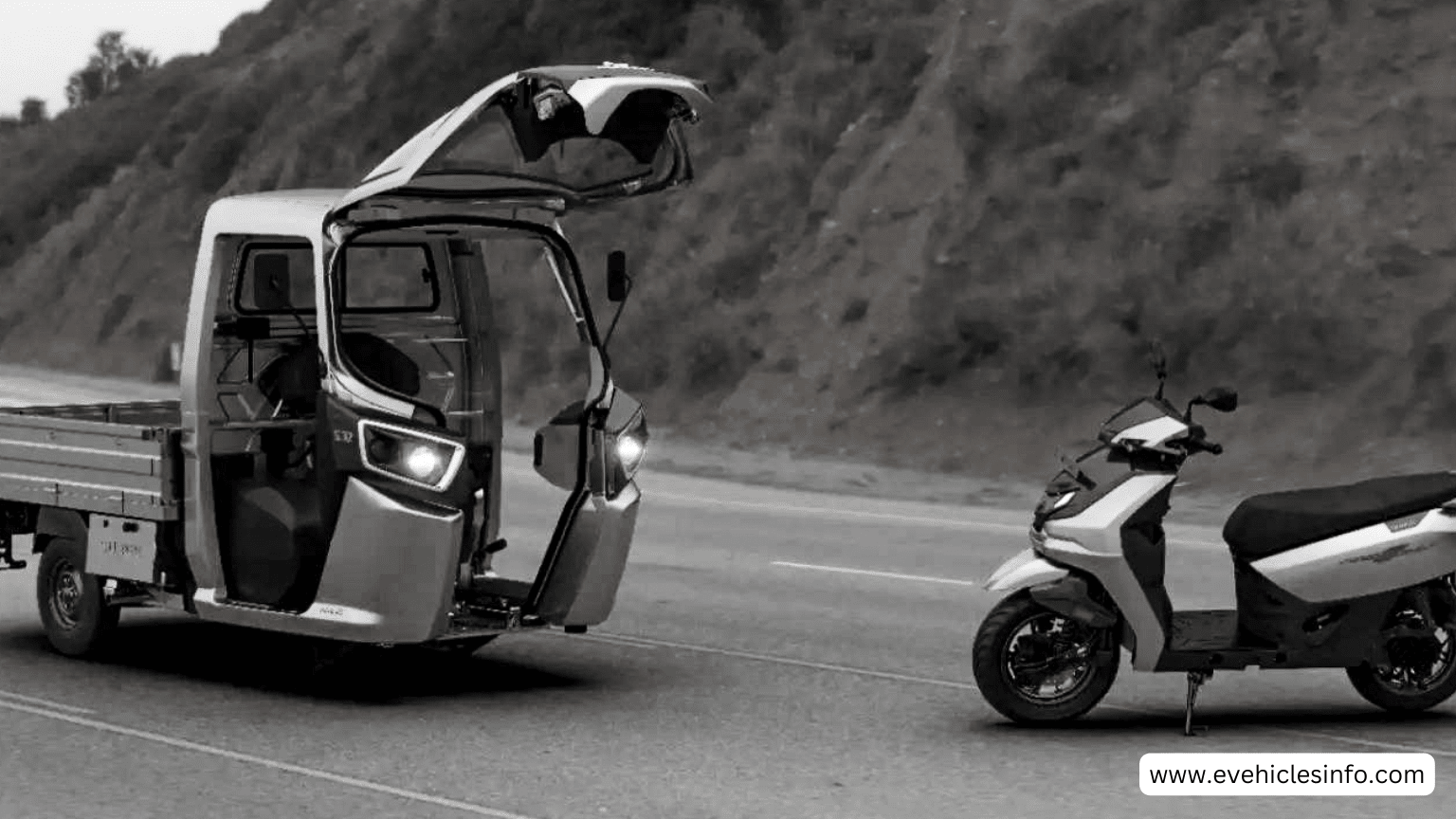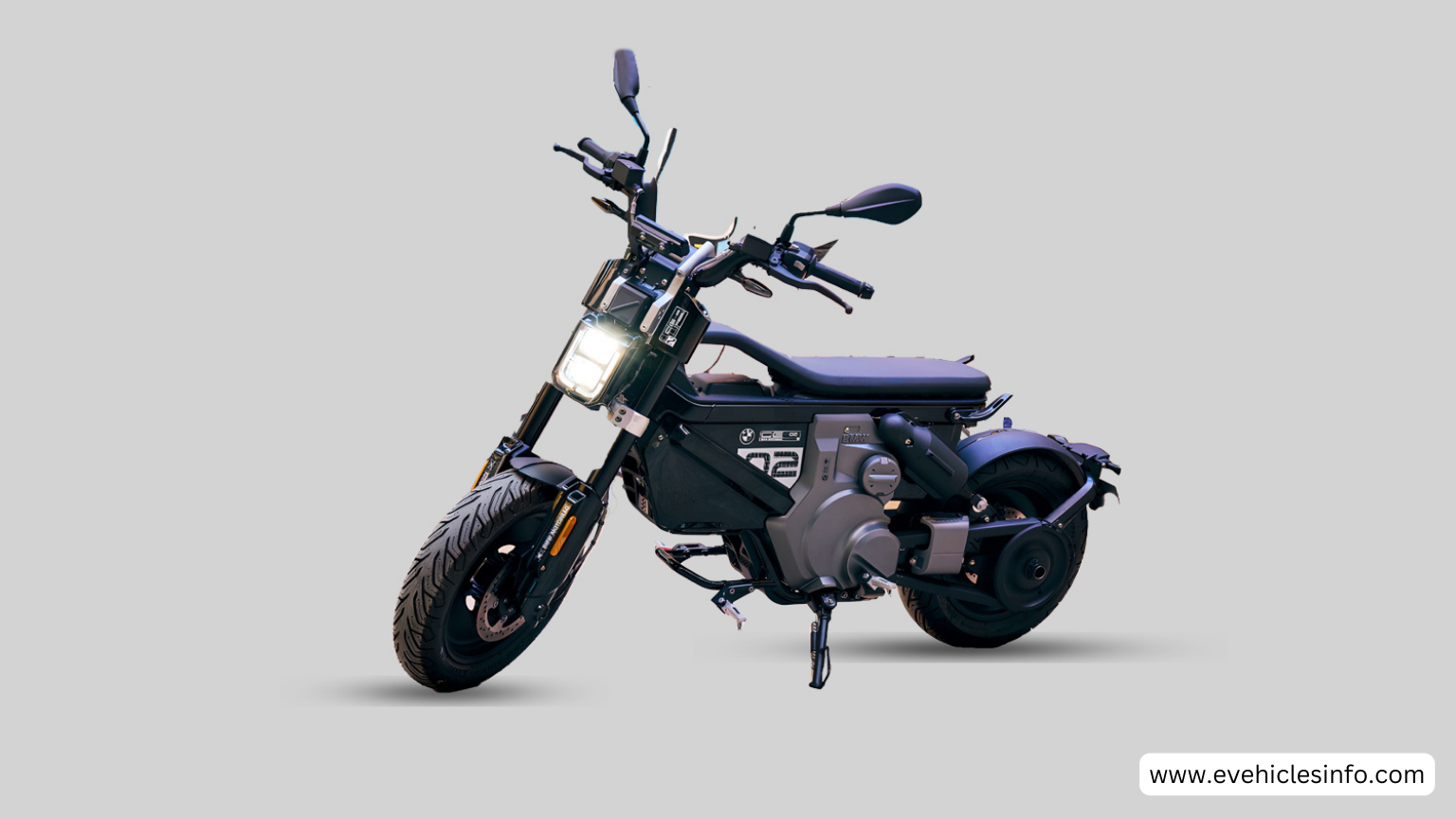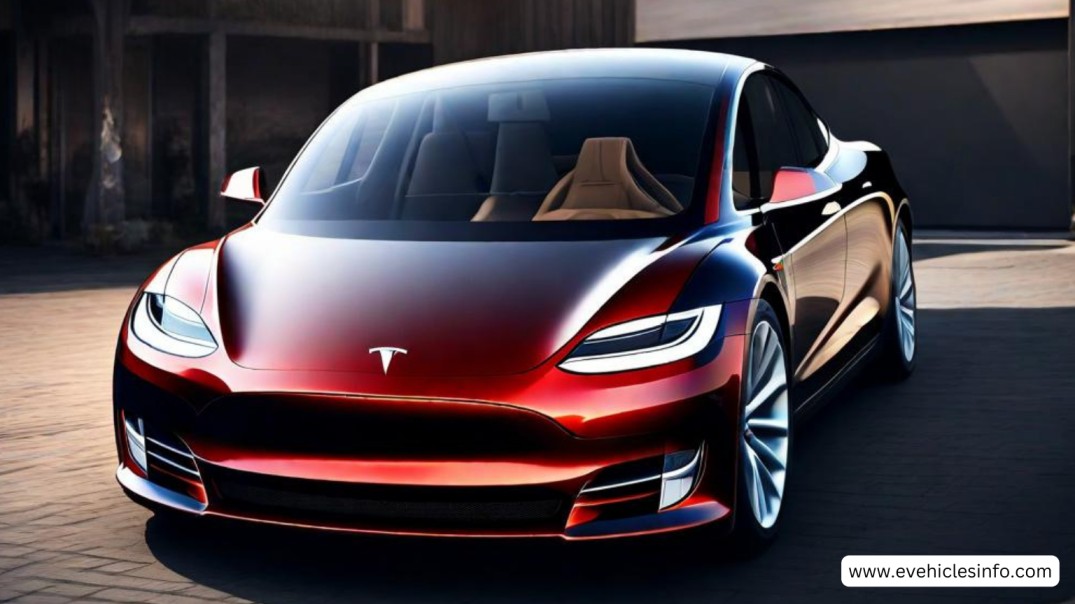Table of Contents
Introduction

The EV market is being boosted significantly, by the constant availability of new models of electric vehicles. This includes a range from hot hatchbacks and coupes to SUVs and pickup trucks. The question, however, revolves around the differentiation between the available electric vehicles and cars. Some electric vehicles are solely powered by battery; while others, termed hybrids, combine the employment of an electric motor with an internal combustion engine in varying methods. Furthermore, fuel-cell electric vehicles and even solar electric cars are noticeable. This guide offers an overview of the divergent types of electric vehicles and their operations.
Battery Electric Vehicles
Battery Electric Vehicles (BEVs), also known as all-electric vehicles or pure electric vehicles, are energized exclusively by electricity and do not possess a gasoline engine. The propulsion of BEVs is facilitated by one or several electric motors, which derive their power from rechargeable batteries. Lithium batteries are the predominant choice for most BEVs today, a decision made by auto manufacturers due to the high power-to-weight ratio offered by lithium.
This results in an expansive range in a physically smaller footprint. The charging of the battery packs is accomplished using electricity supplied via an EV charger. Various types or levels of EV chargers exist, with level 1 being the least rapid and level 3 being the most rapid; the majority of BEVs have the capability for fast charging via a level 3 charger.
Contrary to vehicles powered by gasoline, BEVs are categorized as zero-emission vehicles, producing no harmful emissions or contributing to air pollution. The current range-per-charge of BEVs spans from 50 to 350 miles, but newer models boasting greater ranges are being introduced. A notable example is the 2022 Lucid Air Dream Edition, which boasts a range exceeding 500 miles.
Key Features
- Sole Dependence on Stored Electricity: Stored electricity powers BEVs entirely, doing away with the requirement for fuel sources such as gasoline or diesel.
- Simplified Drivetrain: BEVs (battery electric vehicles) have simpler drivetrains than internal combustion engines (ICEs) due to the electric motor’s capability of delivering constant high torque across a wide speed range.
- Lower Manufacturing Costs: Lower cost is achieved in the manufacturing of BEVs, despite their higher material costs, compared to comparable ICE vehicles.
- Reduced Maintenance Expenses: Numerous studies suggest that maintaining BEVs (Battery Electric Vehicles) could cost up to 35% less than the average ICE (Internal Combustion Engine) vehicle. This cost savings is primarily attributed to the fewer moving parts in BEVs and their less frequent maintenance requirements.
- Efficiency and Environmental Benefits: 70% is exceeded by the overall efficiency of BEVs (Battery Electric Vehicles), while the efficiencies of many ICE vehicles (Internal Combustion Engine Vehicles) fall below 20%. BEVs also contribute to lower emissions and a reduced environmental impact compared to ICE vehicles.
Plug-in Hybrid Electric Vehicles
Batteries are used to power an electric motor in Plug-in Hybrid Electric Vehicles (PHEVs), and an internal combustion engine (ICE) is incorporated that can recharge these batteries to enable longer driving ranges. The PHEV is usually operated based on the electricity stored in the battery until it is nearly used up, which generally happens after around 10 – 50 miles depending on the vehicle model and the size of the battery. Upon depletion of the battery, the car is automatically switched over to use the ICE, enabling it to traverse several hundreds of miles on a tank of fuel.
Fuel use and emissions can be dramatically reduced using this system, particularly on short journeys. In the absence of electricity, a Plug-in Hybrid can operate solely on fuel. PHEV batteries are capable of being charged by a Level 1 or a Level 2 type EV charger, but most of these cannot be charged by a Level 3 DC fast charger.
Key features
- Battery (auxiliary): The auxiliary battery in an electric drive vehicle provides electricity for starting the car and powering vehicle accessories before the traction battery is engaged.
- Charge port: An external power supply can charge the vehicle’s traction battery pack through the charge port.
- DC/DC converter: The traction battery pack’s higher-voltage DC power is converted to the lower-voltage DC power required for vehicle accessories and auxiliary battery recharging by this device.
- Electric generator: The rotating wheels generate electricity during braking, transferring it back to the traction battery pack. Some vehicles utilize motor generators for both driving and regeneration functions.
Hybrid Electric Vehicles (HEVs)
An electric motor and an internal combustion engine work together in Hybrid Electric Vehicles (HEVs), also known as self-charging hybrids. The electric motor utilizes electricity from the battery pack to function. An HEV (Hybrid Electric Vehicle) is different from a PHEV (Plug-in Hybrid Electric Vehicle) in that it cannot be charged using an EV (Electric Vehicle) charger.
Instead, its battery pack is charged by the engine and through regenerative braking. The electric motor generates additional power, allowing the vehicle to have a smaller engine. The battery pack functions as an auxiliary battery for the car, helping to reduce idling when stopped Toyota introduced and popularized Hybrid Electric Vehicles, resulting in better fuel economy and lower emissions compared to conventional engine cars.
Key Features
- Internal combustion engine: An HEV’s conventional engine is responsible for propelling the vehicle as its primary power source. An HEV cannot run on an electric powertrain alone without the engine’s assistance.
- Electric motor: The electric motor assists the engine in an HEV during initial acceleration, improving performance and fuel economy. The electrical energy in the battery pack powers it. It also charges the battery during braking or coasting through the regenerative braking system.
- Battery pack: The electric motor is powered by the battery pack. It stores electrical energy in the battery pack, which is recharged through regenerative braking, and the generator is driven by the IC engine. Auxiliary electrical components, such as lights, can also be powered by the battery pack.
- Generator: The IC engine provides power to the generator in a series hybrid vehicle. The generator then powers the electric motor and charges the battery pack. A generator converts electrical energy from mechanical sources.
Fuel Cell Electric Vehicles (FCEVs)
An FCEV, powered by hydrogen, creates zero tailpipe emissions and runs the vehicle using a similar system as a Battery Electric Vehicle. The fuel cell converts the stored hydrogen energy into electricity to propel the FCEV (Fuel Cell Electric Vehicle). You can fill up the gas tank of a Fuel Cell Electric Vehicle with pure hydrogen in just a few minutes, similar to refueling a conventional Internal Combustion Engine vehicle.
FCEVs travel approximately 300 miles on a single tank of pure hydrogen. They employ regenerative braking technology to capture the energy lost during braking and store it in a battery pack. The limited number of production FCEVs is available to the public, and as of today, the refueling infrastructure is not yet developed enough to support a mass rollout of these vehicles.
Key Features
- Battery (auxiliary): The auxiliary battery in an electric drive vehicle provides electricity to start the car and powers vehicle accessories before the traction battery is engaged.
- Battery pack: The electric traction motor receives supplemental power from this high-voltage battery, which stores energy generated from regenerative braking.
- DC/DC converter: The device takes higher-voltage DC power from the traction battery pack and converts it to the lower-voltage DC power required to operate vehicle accessories and recharge the auxiliary battery.
- Electric traction motor (FCEV): The motor, powered by the fuel cell and the traction battery pack, drives the vehicle’s wheels. Some vehicles use motor generators to perform both the driving and regeneration functions.
Solar Electric Vehicles (SEVs)
Solar Electric Vehicles (SEVs) use photovoltaic cells, like those in solar panels, to convert sunlight into electricity for their operation. SEVs convert sunlight into electricity using photovoltaic cells, similar to those in solar panels, for their operation. A Solar Electric Vehicle owner incurs no cost for the solar energy generated by the vehicle, which can potentially reduce the overall ownership cost. If your SEV requires the sun, it will act as an all-electric vehicle only when the sun is out. A SEV can be charged using a level 1, level 2, or level 3 type EV charger. Aptera, Lightyear, and Sono Motors manufacture some examples of SEVS (Solar Electric Vehicles).
Key Features
- Solar Array: Thousands of photovoltaic cells line Solar Panels, converting Solar Energy into usable electricity.
- Power: Solar electricity is channeled toward the battery for storage with the help of trackers. They also prevent the batteries from overcharging.
- Electric Motor: The electric energy moves the wheels by converting them into mechanical energy.
- Navigational device: We navigate the solar car in the desired direction using the steering or remote control.
Differentiate Between (BEV, HEV, FCEV, PHEV, SEV)
| Feature | BEV | HEV | FCEV | PHEV | Solar EV |
| Power Source | Battery | Battery & Internal Combustion Engine | Hydrogen Fuel Cells | Battery & Internal Combustion Engine | Solar Panels |
| Range | Limited | Longer than BEVs, shorter than PHEVs & ICE vehicles | Similar to ICE vehicles | Varies, typically lower electric-only range than BEVs | Limited |
| Refueling/Recharging | Requires grid charging | Self-charging & regenerative braking | Requires hydrogen refueling | Can be grid charged or fueled conventionally | Relies on solar energy & grid charging |
| Emissions | Zero during operation | Lower than conventional vehicles | Zero, emits water vapor | Lower during electric mode | Zero during solar charging, varies otherwise |
| Charging Infrastructure Availability | Widely available | Widely available | Limited hydrogen stations | Widely available | Requires sunlight or charging infrastructure |

